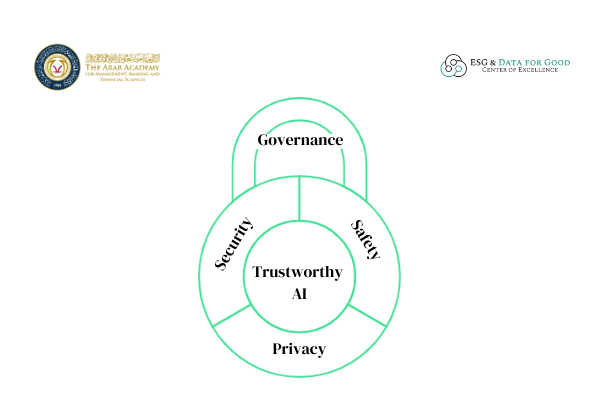Artificial Intelligence (AI): A Disruption that has changed our world
Whether we accept it or not, AI has changed us in different ways. It has changed how we think, act, and work. For instance, if you are currently studying, you may no longer worry as much about your thesis or reading dozens of papers because AI can just do that in seconds. If you are pursuing a new career, AI can customize a roadmap to help and if you are working, it can assist with your daily tasks, brainstorming ideas and conducting research.
In fact, 75% of knowledge workers use AI at work today, with 90% reporting that it helps them save time, 85% stating it allows them focus on their most important tasks while 84% saying it enhances their creativity[1]. This rapid uptake of AI is not at the individual level alone, the adoption of AI at the organizational level has doubled from year 2023 to year 2024 and organizations started deriving business value from it[2]. Leaders of organizations are starting searching for candidates with AI skills. According to the 2024 Work Trend Index, 71% of organizational leaders would rather hire less experienced candidates with AI skills than those with experience but no AI expertise. Supporting this shift, a report by the World Economic Forum[3] predicts that AI will create 97 million new jobs. So, this shift in mindset and behavior, what we call the AI transformation, is happening right now.
AI is also reshaping the way industries operate, creating massive economic value with its contribution to the global economy expected to reach $15.7 trillion by 2030[4]. For instance, in healthcare industry, AI is accelerating breakthroughs in disease diagnosis, drug discovery, and personalized medicine, potentially generating up to $150 billion in annual savings for the U.S. healthcare system alone by 2026[5]. Meanwhile, in manufacturing, the AI revolution is equally remarkable. AI-driven automation is streamlining production, reducing waste, and improving quality control. It’s no surprise that investment in AI for manufacturing is projected to reach $16.7 billion by 2026, according to the World Economic Forum.
AI, particularly Generative AI, has been designed for humans. Large Language models (LLMs) are trained and built with memory to tell a story. They are built so they can relate to their audience and the person they are chatting with. Since people are at the center of this technology, it must be built in a way that earns and maintains their trust. Trust has been a growing concern about AI especially with its accelerating adoption by organizations. Based on KPMG global study of shifting public perception of AI, 61% of people are wary about trusting AI systems[6]. So, trust must be at the heart of this technology because, quite simply, if people do not trust it, they are not going to use it.
The Pillars of Trustworthy AI
Making AI trustworthy requires prioritizing three key pillars; security, privacy and safety. Security is essential to protect against sensitive data leakage and emerging threats, such as prompt injection attacks. These risks are pressing since 78% of AI users are bringing their own AI tools to work[7], often providing information to unapproved AI systems (shadow AI), which increases the risk of data oversharing. Around 80% of business leaders see the leakage of sensitive data by staff as a top concern[8]. To address this, AI developers must not only commit to strong security measures but also have the capabilities to implement them effectively. This includes securing and governing data, detecting and responding to threats, and ensuring compliance with regulations.
Privacy, a fundamental right, is crucial for preventing personal data breaches. Privacy is not just about protecting stored personal data but also about safeguarding information during processing. AI models should comply with data privacy laws, regularly assess and mitigate privacy risks, and respect user consent and preferences. Protecting the data of the users shall be the top priority since data is the fuel that powers AI and any harm or misuse of the data will erode trust in AI models or applications.
Safety is ensuring that AI applications do not generate harmful, unreliable content or ungrounded outputs. AI model is considered safe when it behaves as expected and operates only within the scope of the materials it has legal rights to use.

Key Pillars of Trustworthy AI: Security, Privacy, Safety, and Governance
The pillar that ties all these pillars together, ensuring that all of them are effectively implemented is governance. There are new regulations and frameworks emerging around the world such as the EU AI Act, Artificial Intelligence and Data Act (AIDA) in Canada, NIST AI Risk Management framework in U.S., and Australia’s AI Action plan. These frameworks are designed to ensure that AI systems secure, safe, and privacy-compliant. Companies that adhere to these regulations foster trust and confidence in their products.
However, building trustworthy AI is not a one-time effort, it is a continuous process. It requires ongoing risk assessment, mitigation planning, and continuous monitoring to ensure AI systems remain reliable and worthy of public trust.
The Future: Adapting to AI Transformation
As AI adoption accelerates across individuals and organizations, it brings both opportunities and risks. This transformation is expected to create between 20 to 50 million jobs by 2030 [9], many of which will demand new skills. This makes upskilling critical. AI literacy programs alone won’t be enough; people need to learn not just how to use AI but also how to navigate its risks. Understanding how to leverage AI responsibly will empower individuals to make informed decisions about which AI applications to trust.
Awareness must also come from the top down. While many regions and countries are establishing Ethical AI and Data Acts, Africa and the MENA region still lag behind in this area. This must become a priority, as strong governance is the key to unlocking AI’s full potential while ensuring it serves the people it was designed to help, without causing harm.
The future will not wait. AI is reshaping the world right now, and those who fail to adapt will be left behind. The question is no longer whether AI will transform industries but rather how we will shape that transformation to build a future that is innovative, responsible, and, above all, human-centric.
References
[1] 2024 Work Trend Index Annual Report from Microsoft and LinkedIn
[2] https://www.mckinsey.com/capabilities/quantumblack/our-insights/the-state-of-ai-2024
[3] https://www.weforum.org/press/2020/10/recession-and-automation-changes-our-future-of-work-but-there-are-jobs-coming-report-says-52c5162fce/
[4] https://www.pwc.com/gx/en/issues/analytics/assets/pwc-ai-analysis-sizing-the-prize-report.pdf
[5] https://www.accenture.com/content/dam/accenture/final/a-com-migration/manual/r3/pdf/pdf-49/Accenture-health-artificial-intelligence-j.pdf
[6] https://assets.kpmg.com/content/dam/kpmg/es/pdf/2023/09/trust-in-ai-report.pdf
[7] 2024 Work Trend Index Annual Report from Microsoft and LinkedIn
[8] https://news.microsoft.com/wp-content/uploads/prod/sites/711/2024/11/Gen-AI-Survey-FINAL-20231228.pdf
[9] https://www.mckinsey.com/featured-insights/future-of-work/jobs-lost-jobs-gained-what-the-future-of-work-will-mean-for-jobs-skills-and-wages


